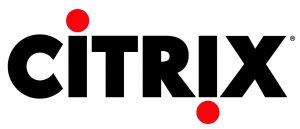Citrix on Corporate Innovation and Big Hairy Audacious Goals

Innovation continues to be a significant challenge for large corporations. Most companies are talking about innovation, but few have mechanisms in place to foster innovative thinking and manage the innovation initiatives. The focus continues to be on execution, as execution oriented projects have clearer short-term outcomes directly tied to compensation, and no incentive to innovate.
At Citrix we have found a way to execute and innovate at the same time, maintaining a healthy balance between the two disciplines.
Execution
Our core operating mechanisms are based on the Rhythm framework as described by Patrick Thean in his book “How to Achieve Breakthrough Execution and Accelerate Growth”. At 10,000 feet this framework helps companies decide on their Winning Moves – initiatives that may lead to 2X revenue growth in the next 3-5 years, and then derive the annual and the quarterly goals – outcome based milestones which help achieve the Winning Moves. This framework fosters the entire company to align on the business objectives, and operate as one. While Rhythm is focused on execution, Winning Moves are the ones that often require innovative products and services to achieve the 2X revenue growth. However, this framework does not describe how to manage innovation.
Another framework we are beginning to adopt is called “Zone to Win”, as described by Geoffrey A. Moore in his book Zone to Win: Organizing to Compete in an Age of Disruption. Based on “3 Horizons of Innovation”, this model makes a clear distinction between products that are major contributors to the bottom line today (the Performance Zone) and products that may become major revenue contributors in the future (the Incubation Zone). Applying this framework to classify the ongoing projects, initiatives, and product development efforts help us identify which management and leadership techniques to apply to various products in the portfolio. For example, innovative products in the Incubation Zone should be measured with customer and user traction metrics rather than revenue metrics.
Where do the Incubation Zone projects come from? Read on to learn how we manage the innovation funnel.
Innovation Management
2 years ago we have established the Innovation Center of Excellence with the charter of helping one of our business units to achieve its BHAG (Big Hairy Audacious Goal). Our BHAG is for our employees to start 20 new businesses that each exceeds $1 million in revenue, inside or outside Citrix. You can read more about this ambitious and unique BHAG in this Forbes article. To achieve this BHAG we have a structured innovation approach with two essential components in place: Education and Innovation Programs.
Our BHAG is for our employees to start 20 new businesses that each exceeds $1 million in revenue, inside or outside Citrix.
Education
Everyone has ideas, but few know what steps to take next, how to validate these ideas, and how to build a viable business. Thankfully, the scientific method is gaining traction with both entrepreneurs and intrapreneurs, who learn to apply the Lean Startup framework to continuously validate and iterate on their ideas until they become viable businesses. At Citrix, we have several classes and workshops that teach future innovators how to apply the Lean Startup framework to internal or external ideas. The most successful workshop is the Lean Startup Bootcamp where participants work in teams to validate an idea in two days through design thinking, customer interviews, and rapid prototyping.

Innovation Programs
Reading books and attending classes on Lean Startup is great, but disciplined innovation is one of these things that one must experience first hand by doing, to get a grasp on the subject. We have a multi-stage program in place to foster innovative idea generation and cultivation.
Stage 1: Ideation
In this stage, ideas are circulated, discussed, and 3H teams (Hipster, Hustler, Hacker) assemble around these ideas. Top 5 teams are chosen to work on their ideas. One of the main criteria for team selection is alignment with the Winning Moves as described above.
Stage 2: Lean Innovation Challenge
Teams selected in Stage 1 are given training on Lean Startup concepts, either as a set of just-in-time classes or in the Lean Startup Bootcamp in the beginning of the challenge. Then, for 12 weeks these teams are spending up to 10% of their time to validate and cultivate the idea by applying the Lean Startup principles. At the end of 12 weeks, teams pitch their business concepts to the exec team.
Stage 3: Innovators Program
Teams selected at the end of the Lean Innovation Challenge (usually 2-3 teams) are progressing to the Innovators Program. This is an intensive startup accelerator where internal teams are joining external startups and are fully dedicated to launching their product/business for the next 12 weeks, away from their day jobs. In this program teams are trained on additional concepts such as pitching to investors, and customer acquisition techniques, measuring traction, etc.
Stage 4: Funding Decision
This stage varies each year, as it mostly depends on type of product idea that was cultivated during the Innovators Program, and the results teams present at the end of the program. Some of the possible outcomes include (a) funding to launch the product, (b) incorporating the idea into an existing product roadmap, (c) spinoff, or (d) shelving the project.
Whether the participants continue with their project after receiving the funding or go back to their functional teams, everyone comes back ready to launch a new product line at Citrix or a new business outside of Citrix, in both cases improving our chances to achieve the BHAG. Innovation does not have to be structured. We have many employees who are passionate about their ideas and work on these ideas nights and weekends to make a dream into reality. Understanding the Lean Startup principles prepares these employees for success and structured innovation approach helps stay on course, developing products customers will love.
Conclusion
Execution and Innovation can and should co-exist, and there are mature and tried frameworks to help large corporations succeed in balancing the two disciplines. If the executive commitment is in place and there are people passionate about innovation in your company you can do it too.
Wait! Before you go…
Choose how you want the latest innovation content delivered to you:
- Daily — RSS Feed — Email — Twitter — Facebook — Linkedin Today
- Weekly — Email Newsletter — Free Magazine — Linkedin Group
Eugene Yamnitsky is Director of Product Management and Innovation at Citrix. He leads the ShareFile Product Management team and is responsible for mobile, desktop and web applications, as well as key infrastructure components and the developer program. Eugene also leads Citrix’s Innovation Center of Excellence where he acts as a catalyst for innovation and mentors teams in their corporate Startup Accelerator. He also heads the innovation consulting practice DisruptOrg.
is Director of Product Management and Innovation at Citrix. He leads the ShareFile Product Management team and is responsible for mobile, desktop and web applications, as well as key infrastructure components and the developer program. Eugene also leads Citrix’s Innovation Center of Excellence where he acts as a catalyst for innovation and mentors teams in their corporate Startup Accelerator. He also heads the innovation consulting practice DisruptOrg.
NEVER MISS ANOTHER NEWSLETTER!
LATEST BLOGS
Three things you didn’t know about credit cards
Photo by Ales Nesetril on Unsplash Many of us use credit cards regularly. From using them for everyday purchases to…
Read MoreFive CV skills of a business-minded individual
Photo by Scott Graham on Unsplash The skills listed on a CV help employers quickly understand your suitability for a…
Read More


